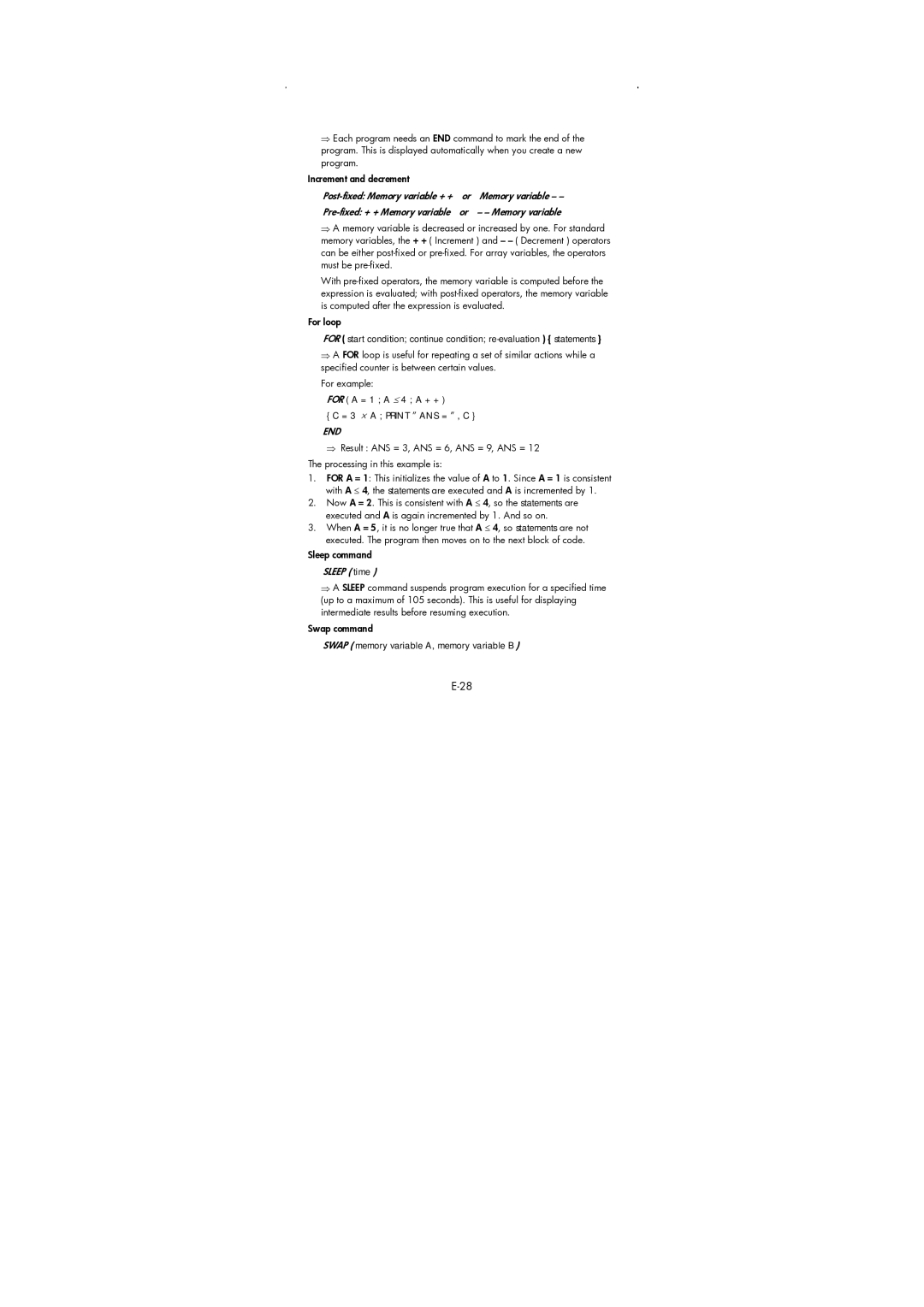⇒Each program needs an END command to mark the end of the program. This is displayed automatically when you create a new program.
Increment and decrement |
|
|
or | Memory variable – – | |
or | – – Memory variable |
⇒A memory variable is decreased or increased by one. For standard memory variables, the + + ( Increment ) and – – ( Decrement ) operators can be either
With
For loop
FOR ( start condition; continue condition;
⇒A FOR loop is useful for repeating a set of similar actions while a specified counter is between certain values.
For example:
FOR ( A = 1 ; A ≤ 4 ; A + + )
{C = 3 × A ; PRINT ” ANS = ” , C }
END
⇒ Result : ANS = 3, ANS = 6, ANS = 9, ANS = 12
The processing in this example is:
1.FOR A = 1: This initializes the value of A to 1. Since A = 1 is consistent with A ≤ 4, the statements are executed and A is incremented by 1.
2.Now A = 2. This is consistent with A ≤ 4, so the statements are executed and A is again incremented by 1. And so on.
3.When A = 5, it is no longer true that A ≤ 4, so statements are not executed. The program then moves on to the next block of code.
Sleep command
SLEEP ( time )
⇒A SLEEP command suspends program execution for a specified time (up to a maximum of 105 seconds). This is useful for displaying intermediate results before resuming execution.
Swap command
SWAP ( memory variable A, memory variable B )
